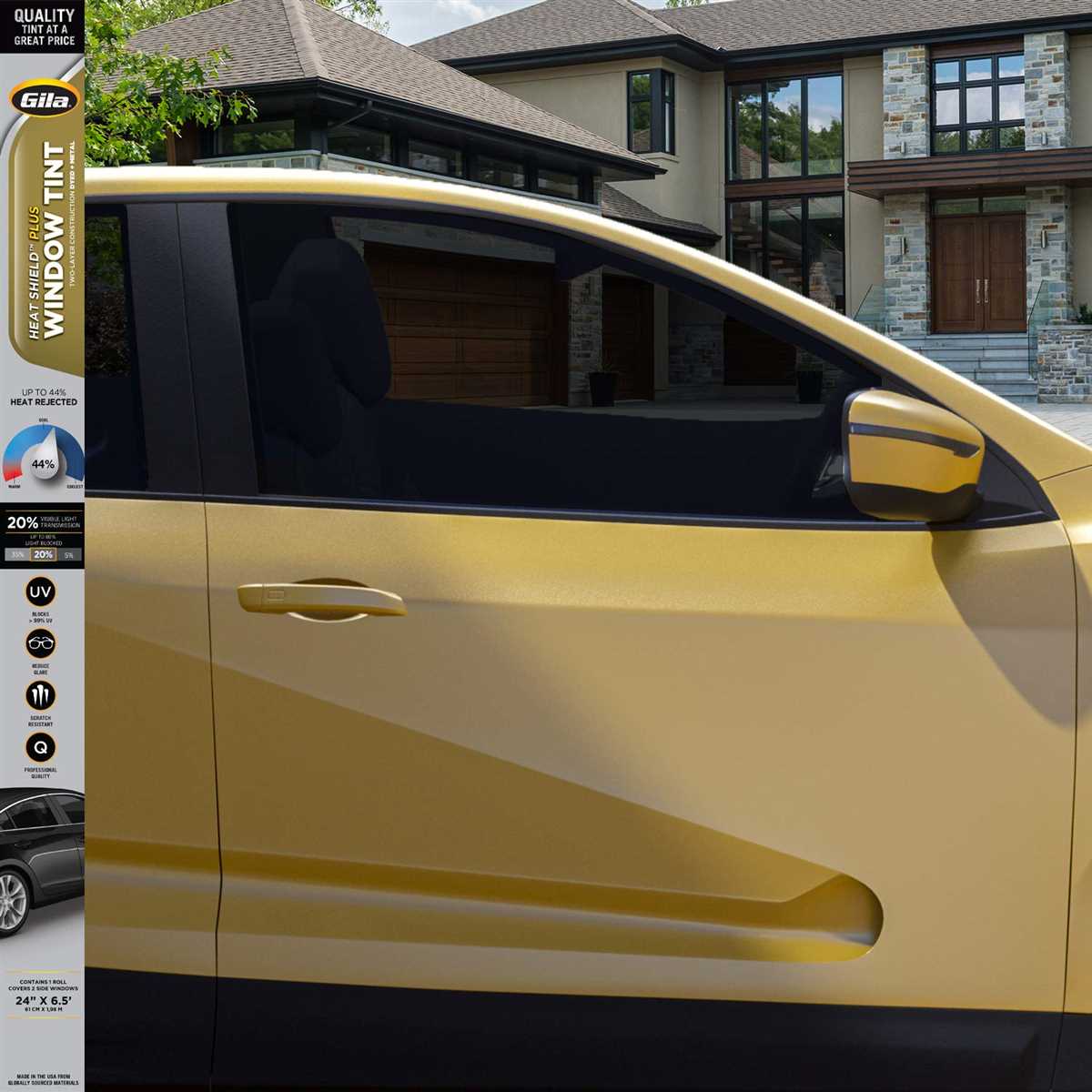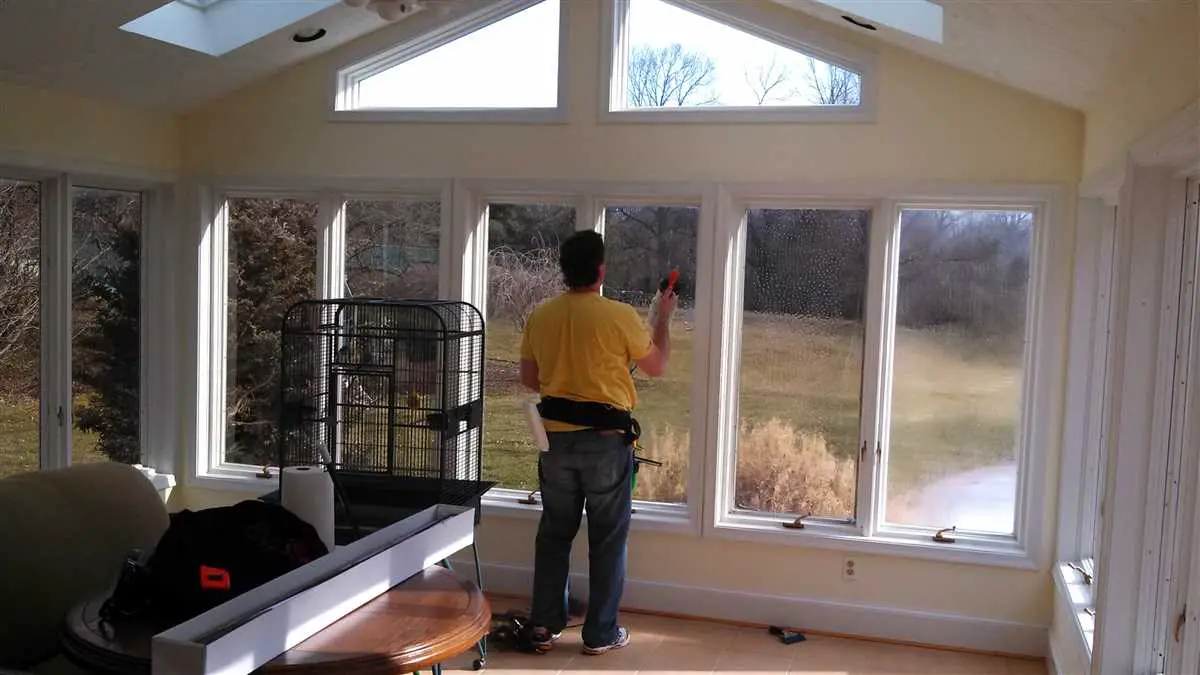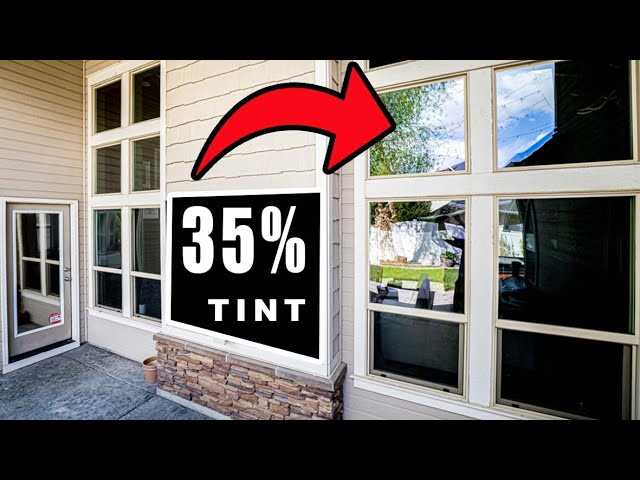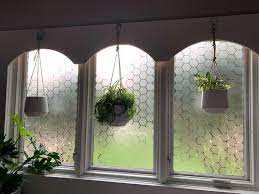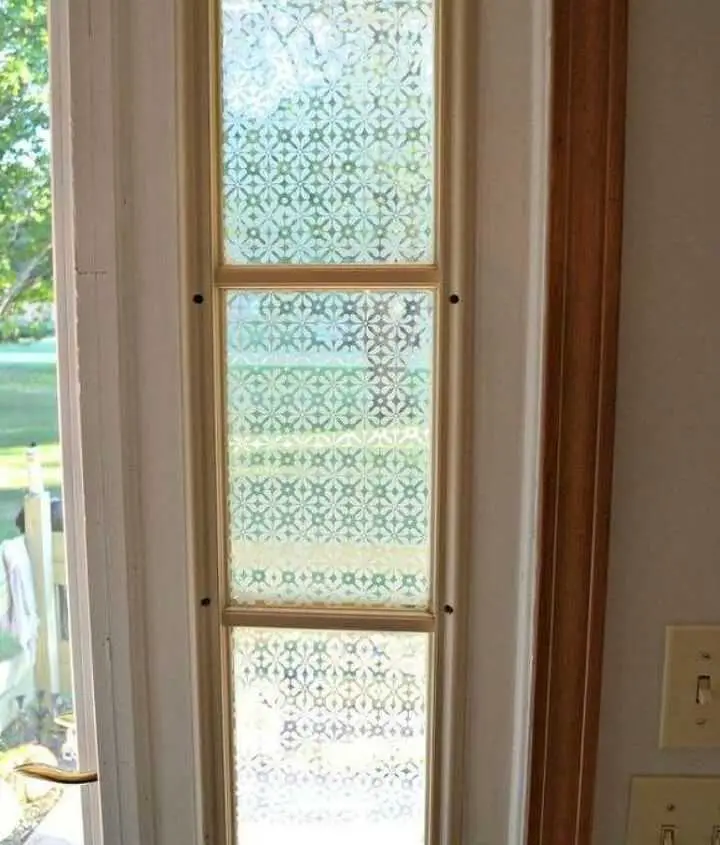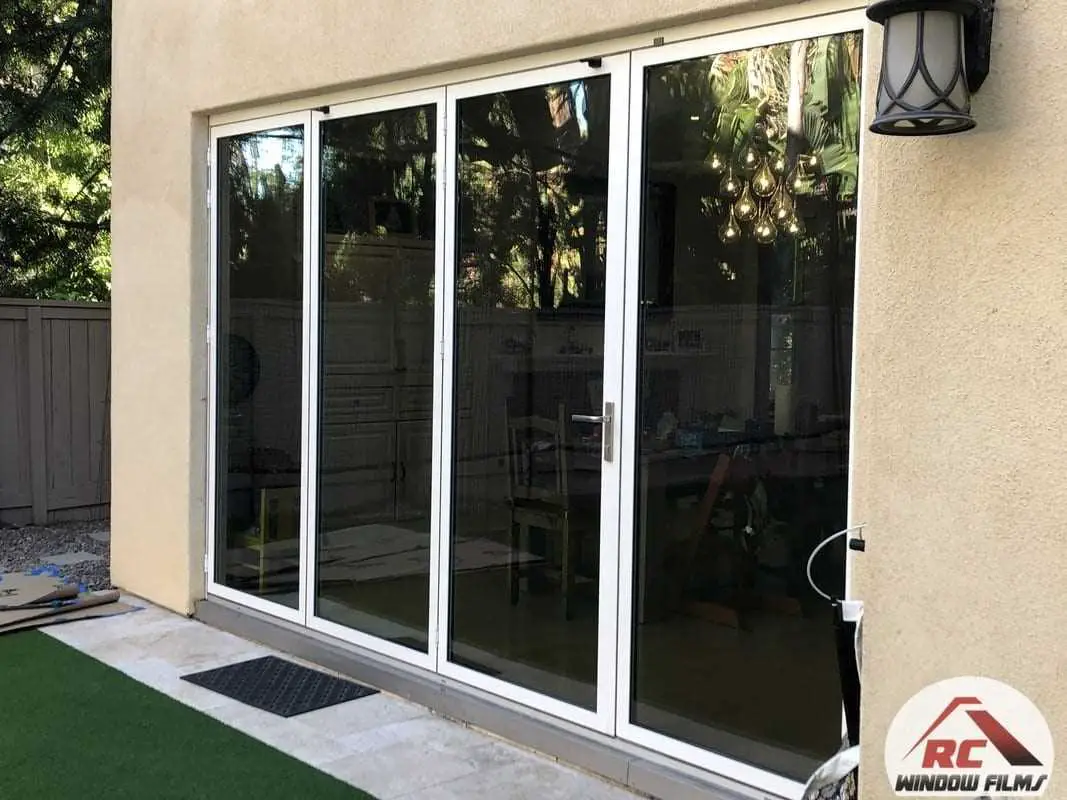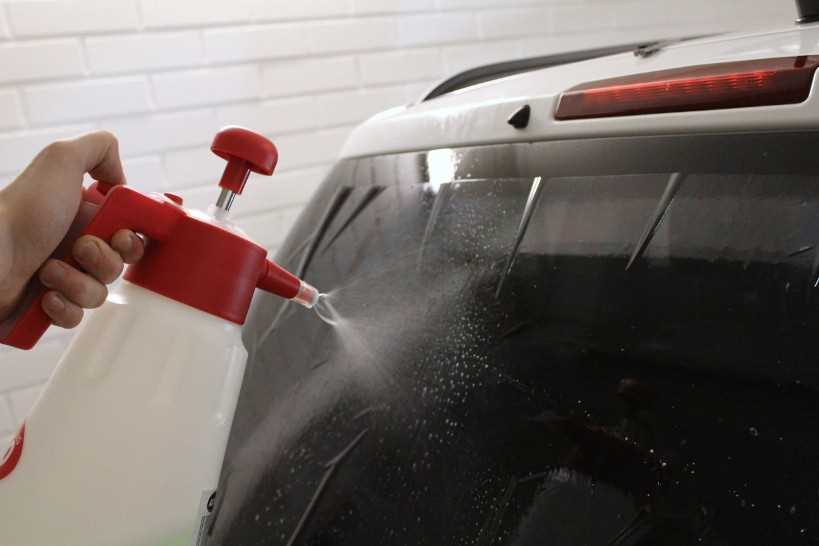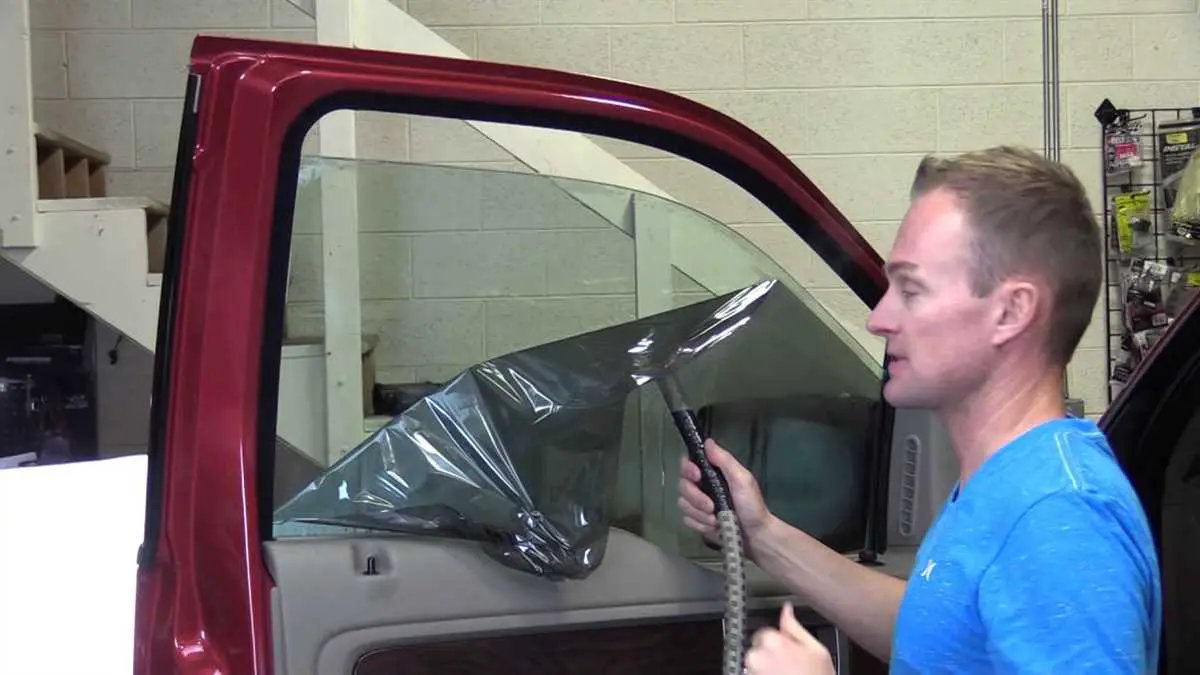
If you’ve had your car’s window tint for a while and it’s starting to fade or bubble, or maybe you just want a change, you may be considering removing it. Typically, removing window tint involves using a heat gun or hairdryer to soften the adhesive and peel off the tint. However, if you don’t have access to a heat source or you’re worried about damaging the glass, there are alternative methods you can try.
Method 1: Ammonia Solution
One common way to remove window tint without heat is by using an ammonia solution. Start by mixing equal parts of ammonia and water in a spray bottle. Spray the solution generously onto the tinted window and cover it with a trash bag to prevent evaporation. Leave it to sit for about an hour. Then, starting at one corner, peel off the tint slowly. Use a razor blade or scraper to remove any leftover adhesive or residue.
Method 2: Vinegar and Soap
If you prefer a more natural and less pungent option, you can try using vinegar and soap. Mix equal parts of vinegar and dish soap in a spray bottle, and then add water. Spray the solution onto the window tint, making sure to saturate it completely. Cover the window with plastic wrap to prevent the solution from drying out. Leave it to sit for a few hours. Afterwards, use a razor blade or scraper to peel off the tint. If any adhesive remains, spray more solution and scrape it off.
Method 3: Steaming Method
Another method that does not require heat directly applied to the window tint is the steaming method. Boil water in a kettle or pot and position it close to the tinted window. Close all the windows and doors of the car to trap the steam inside. The steam will soften the adhesive of the tint. After about 15 minutes, use a razor blade or scraper to peel off the tint. Clean any adhesive residue with a cloth soaked in alcohol or window cleaner.
These methods should help you remove your window tint without using heat. Remember to take your time and be patient during the process to avoid damaging the glass or leaving any residue behind. If you’re uncertain or if the tint is stubborn, it might be best to seek professional help.
The Importance of Removing Window Tint
Window tinting can provide a variety of benefits, such as reducing glare and heat, improving privacy, and enhancing the aesthetic appeal of your vehicle or home. However, there may come a time when you need to remove the window tint. Whether it’s because the tint has started to fade or crack, or you simply want to change the look of your windows, removing the tint is an important process that should be done carefully and correctly.
One of the main reasons why it’s important to remove window tint is to ensure that you have a clear and unobstructed view through your windows. Over time, window tint can become discolored or damaged, making it difficult to see clearly. This can be particularly dangerous when driving, as it can reduce your visibility of the road and other vehicles.
Window tint that is peeling, bubbling, or cracking can also look unsightly and detract from the overall appearance of your vehicle or home. By removing the old tint and replacing it with a fresh layer, you can restore the sleek and elegant look that window tint is meant to provide.
Additionally, removing window tint can also be beneficial if you are planning to sell your vehicle or home. While some people may appreciate the presence of window tint, others may find it off-putting or prefer a different level of tint darkness. By removing the tint, you can appeal to a wider range of potential buyers and increase the value of your property.
Overall, the importance of removing window tint cannot be overstated. It ensures clear visibility, improves the aesthetic appeal, and increases the value of your vehicle or home. So, if you find that your window tint is damaged or no longer serves its purpose, it’s time to invest in the removal process and give your windows a fresh start.
Methods of Removing Window Tint Without Heat
Window tint is a popular way of reducing glare and keeping your car cool, but over time, it can become damaged or begin to peel. When this happens, you may want to remove the window tint without using heat, as applying heat can damage the window or the surrounding area. Fortunately, there are several methods you can use to remove window tint without applying heat:
- Using Soapy Water: Start by cleaning the window thoroughly with soapy water. Mix a few drops of dish soap with warm water and apply it to the window using a sponge. Allow the soapy water to sit on the tint for a few minutes to loosen the adhesive. Then, use a razor blade to carefully lift an edge of the tint and peel it off.
- Using Ammonia: Ammonia can also be used to remove window tint without heat. Mix equal parts of ammonia and water in a spray bottle and spray it onto the tint. Cover the window with a black trash bag to prevent the ammonia from evaporating. Leave the trash bag on for a few hours or even overnight. After that, use a razor blade or a credit card to peel off the tint.
- Using Vinegar: Vinegar is another effective method of removing window tint without heat. Mix equal parts of vinegar and water in a spray bottle and spray it onto the tint. Cover the window with a black trash bag and leave it on for a few hours. The vinegar will work to dissolve the adhesive, making it easier to remove the tint. Use a razor blade or a credit card to peel off the tint.
- Using a Steamer: If you have access to a clothing steamer, you can try using it to remove window tint without heat. Fill the steamer with water and preheat it according to the manufacturer’s instructions. Hold the steamer about an inch away from the tint and steam it for a few minutes. This will help to loosen the adhesive, making it easier to peel off the tint.
- Using a Plastic Scraper: In addition to the methods mentioned above, you can also use a plastic scraper to remove window tint without heat. Start by spraying soapy water or a vinegar-water solution onto the tint. Then, use a plastic scraper to gently lift an edge of the tint and begin peeling it off. Be careful not to scratch the window while doing this.
Remember to be patient and take your time when removing window tint without heat. Take extra care not to damage the window or the surrounding area. If you encounter any resistance or find that the tint is not coming off easily, you may need to repeat the process or try a different method. With a little patience and the right tools, you can successfully remove window tint without using heat.
Vinegar Solution Method
Another effective method for removing window tint without using heat is the vinegar solution method. Vinegar is a natural and cheap alternative to chemicals that can be used to soften the adhesive on the tint film.
To use this method, you will need:
– White vinegar
– Spray bottle
– Plastic wrap
– Razor blade or scraper
– Paper towels or microfiber cloth
Here’s how to remove window tint using the vinegar solution method:
- Fill a spray bottle with white vinegar.
- Spray the vinegar solution onto the window tint generously.
- Cover the window with plastic wrap to prevent the vinegar solution from evaporating.
- Leave the plastic wrap in place for at least one hour.
- After an hour, remove the plastic wrap and start peeling off the tint from one corner. If the tint doesn’t come off easily, use a razor blade or scraper to gently lift the film.
- If there are any remaining adhesive residues on the window, spray the vinegar solution directly on them and let it sit for a few minutes. Then, use a razor blade or scraper to remove the adhesive.
- Once all the tint and adhesive residues are removed, use a paper towel or microfiber cloth to wipe the window clean.
Remember to clean the window thoroughly after using the vinegar solution method to remove any vinegar residue.
This method might require some patience and effort, but it is an effective and eco-friendly way to remove window tint without heat.
Ammonia Solution Method
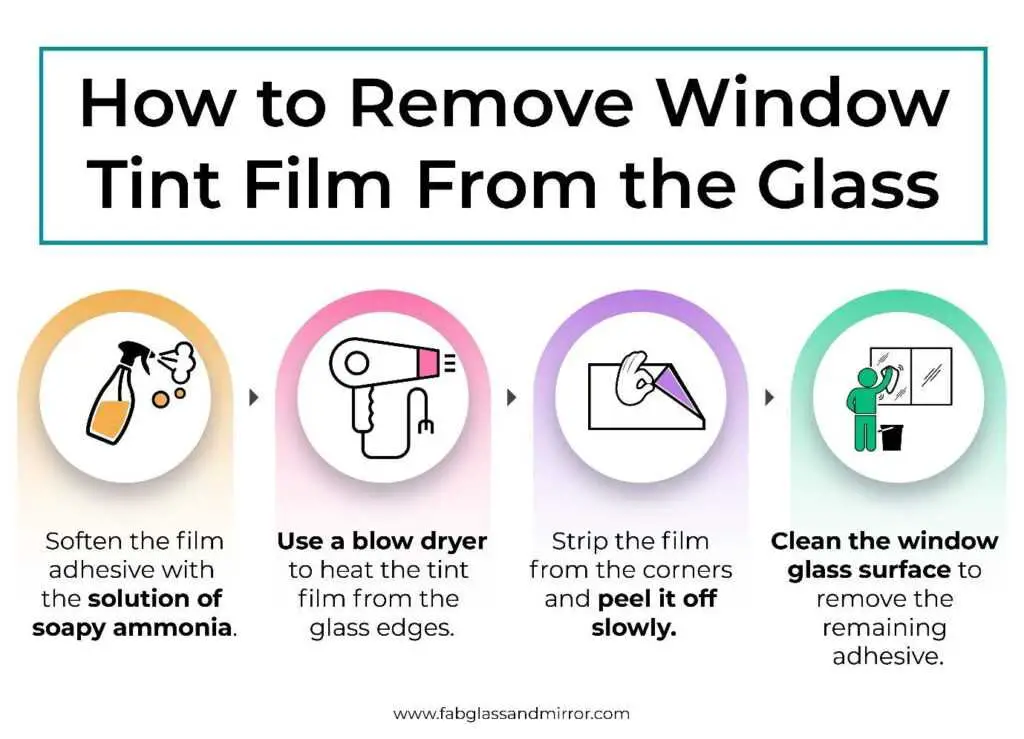
Another effective method to remove window tint without using heat is the ammonia solution method. This method involves the use of ammonia, water, dish soap, and a plastic scraper.
Here’s how you can do it:
- Mix equal parts of ammonia and water in a spray bottle.
- Add a few drops of dish soap to the mixture and shake well.
- Spray the solution generously onto the window tint, ensuring that it is completely saturated.
- Cover the tinted area with a plastic bag or cling wrap to prevent the solution from drying out.
- Leave the solution to soak into the tint for about an hour.
- After an hour, carefully peel off the plastic covering.
- Using a plastic scraper, gently scrape off the window tint. Start at the edges and work your way towards the center.
- If the tint is not coming off easily, apply more solution and let it sit for a while longer.
- Wipe off any residue with a clean cloth soaked in the ammonia solution.
- Finish by cleaning the window with glass cleaner to remove any remaining adhesive or streaks.
It is important to note that ammonia can be irritant to the skin and eyes, so make sure to wear protective gloves and goggles when using this method. Additionally, ensure that the area is well-ventilated to avoid inhaling the fumes. If you’re working on a large window, you may need to repeat the process multiple times.
The ammonia solution method can be a time-consuming process, but it is effective in removing window tint without the need for heat.
Steam Method
The steam method involves using steam to loosen the adhesive of the window tint, making it easier to remove. Here’s how to do it:
- Fill a pot or kettle with water and bring it to a boil on your stove.
- Hold the pot or kettle close to the window you want to remove the tint from, but be careful not to let the water touch the glass directly.
- Allow the steam to penetrate the window tint for a few minutes. This will help soften the adhesive and make it easier to peel off.
- Use a razor blade or scraper to gently lift the edge of the tint film. Be careful not to scratch the glass in the process.
- Once you have an edge lifted, carefully peel the tint off the window, using the razor blade or scraper to help loosen any stubborn areas.
- Continue peeling until all of the tint is removed.
- Use a glass cleaner or a mixture of water and soap to clean any leftover adhesive residue from the window.
- For stubborn residue, try using a commercial adhesive remover and follow the instructions provided.
Remember to wear gloves and safety glasses while using the steam method to protect yourself from potential steam burns or flying glass. Also, be cautious when working with sharp tools like razor blades. If you’re unsure about using the steam method or feel uncomfortable doing so, it may be best to seek professional help.
Fishing Line Method
The fishing line method is another effective way to remove window tint without using heat. It involves using a piece of fishing line or dental floss to carefully peel off the tint film from the window.
To use the fishing line method, follow these steps:
-
Start by cutting a piece of fishing line or dental floss that is long enough to reach across the width of the window.
-
Take one end of the fishing line and slide it under a corner of the tint film.
-
Hold the fishing line tightly and begin to saw back and forth, moving along the edge of the window.
-
As you continue to saw, the fishing line will gradually separate the tint film from the window.
-
Be patient and take your time to avoid damaging the window or leaving any adhesive residue behind.
-
Once the tint film is completely removed, use an adhesive remover or soapy water to clean any remaining residue.
The fishing line method is a safe and effective option for removing window tint without heat. However, it requires patience and careful maneuvering to avoid any damage to the window. It is important to remember to clean the window thoroughly after removing the tint to ensure a clear and spotless finish.

